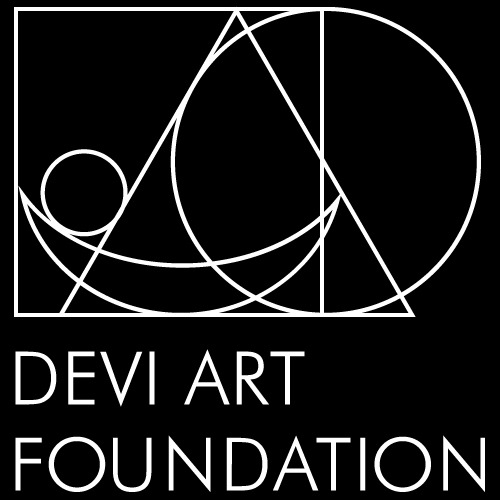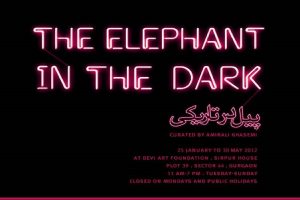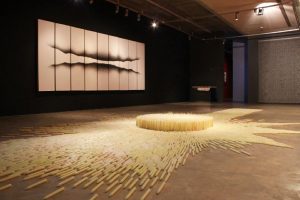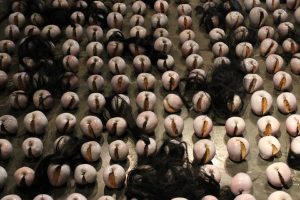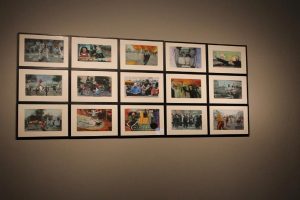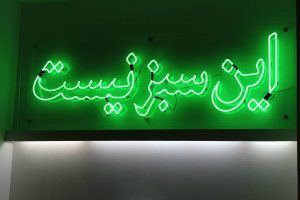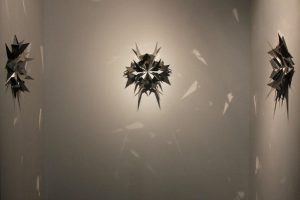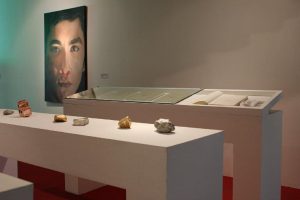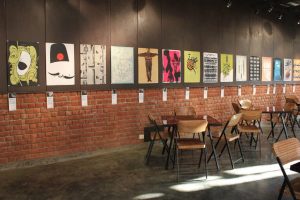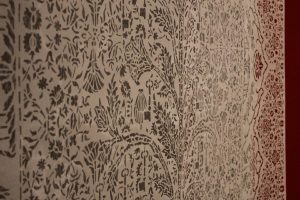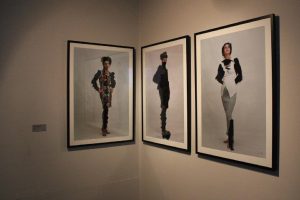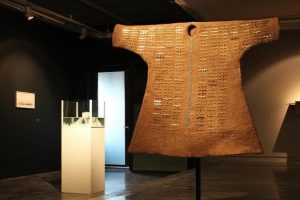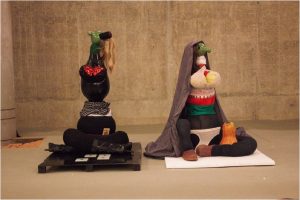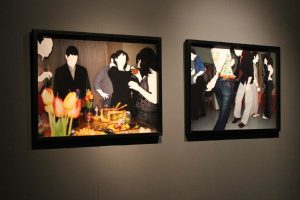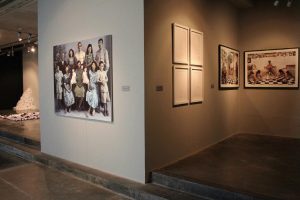The Elephant in the Dark (2012)
Story of the Making
Beyond the subcontinent, in pursuit of new conversations, Lekha and Anupam, separately, travelled to Iran. They were enthralled by the strong artistic expressions emerging from the country. This contributed to adding to the collection back home. Graphic artist from Iran, Amir Ali Ghassemi was requested to curate an exhibition displaying works by Iranian artists, with practices that had evolved over a decade – both censored and uncensored. The exhibition borrows its title from a poem by Rumi, inspired by the story of the elephant and the blind. The poet cleverly changes the dramatic state of blindness into darkness, which illustrates how complex it is to evaluate an event, situation or object by seeing it from a particular angle and not as a whole. Humans are ultimately incapable of understanding realities without using all senses and means of understanding.
Highlights
– The show is divided into three main sections, each section has a theme around which the works are placed in a position of a possible dialogue. Three main areas of curatorial inquiry are the following: in Departure from Form, the traditional form is re-contextualized and used for contemporary critical expressions. Here the works by Timo Nasseri, Nazgol Ansarinia, Shirazeh Houshiary and others are exploring traditional Iranian visual territory through the language of minimalism.
– The other group of works in Reflections of a Complex Society raise troublesome questions of the relationship between sexes and gender in Iran. It would be superficial to call the works by Shadi Ghadirian, Katayoun Karami or Shirin Fakhim feminist. Yes, there is a denouncement of the censorship and of the restricted position of women. Yet the objectives of Iranian women are different. They don’t compete with men; they demand their own place, their position as women, and their right to fully express the female side of their being.
– The final, and probably the most engaging group of works, is in The Politicized Scenery, the one that directly responds to the political situation in Iran, the Middle East and even wider, to the international community.
Participating Artists:
Samira Abbassy, Iman Afsarian, AKSbazi Shirin Aliabadi, Samira Alikhanzadeh, Afruz Amighi, Mojtaba Amini, Nazgol Ansarinia, Kamrooz Aram, Reza Aramesh, Mehraneh Atashi, Shoja Azari, Mahmoud Bakhshi, Gohar Dashti, Alireza Dayani, Ala Ebtekar, Shirin Fakhim, Golnaz Fathi, Parastou Forouhar, Shadi Ghadirian, Amirali Ghasemi, Bita Ghezelayagh, Barbad Golshiri, Amirali Golriz, Ramin Haerizadeh, Rokni Haerizadeh, Elham Doost Haghighi, Khosrow Hassanzadeh, Ghazaleh Hedayat, Peyman Hooshmandzadeh, Shirazeh Houshiary, Katayoun Karami, Shahram Karimi, Simin Keramati, Abbas Kowsari, Farideh Lashai, Amir Mobed, Masoumeh Mozaffari, Pendar Nabipour, Timo Nasseri, Farah Ossouli, Leila Pazooki, Sara Rahbar, Mohsen Rastani, Shirin Sabahi, Hamed Sahihi, Zeinab Shahidi, Marnani Behnoush Sharifi, Jinoos Taghizadeh, Newsha Tavakolian, Sadegh Tirafkan and Ali Zanjani
